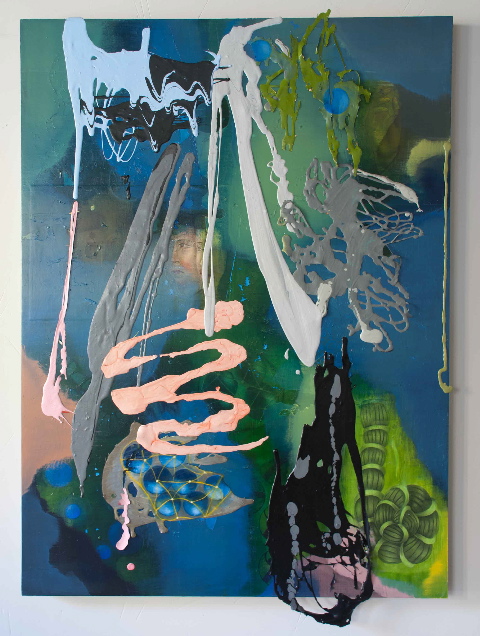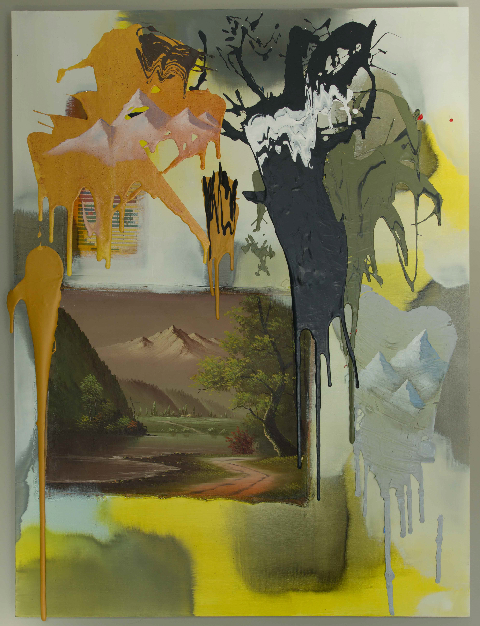
Jody Guralnick's "Augury"
Jody Guralnick: Prescience in Nature
Before science, there is nature; before investigation, the phenomena to be observed and described.
In her Aspen studio, Jody Guralnick is surrounded by what she calls nature’s “baroqueness.” Outside, through large panels of glass, aspen branches tangle down to Castle Creek and the mountains beyond. Inside, the studio surfaces are piled with found objects – pine cones, pine cone scales, birds’ nests, wasps’ nests, intact and pulled-apart; also, animal skulls, poppy pods, Chinese mushrooms, rose petals and books.
Guralnick’s new paintings and sculptures at David Floria in Aspen, continue to layer the found and the constructed, in collages of images and objects, on board and on paper and on ceramics, with oils and acrylics and wasps nests and books, and, in one piece, a doll, and a wood and glass cabinet.
The emotional and visual center of the painting “Kitten” is an image of an anonymous cat overlaid by a transparent Indian fabric with three-dimensional flowers, snipped away in places to reveal parts of the words beneath —“Fra Ange,” “animal skulls,” “painted skin, “your inner fish.” Shrouded in gray, layered with a red slash of acrylic, the painting is a kind of memoriam to Guralnick’s actual pet kitten, who disappeared into the tangled aspens one recent night.
“Natural History” is a four-paneled collage on wood of painted and found images and objects– paintings of birds and bird parts, calligraphy, a kitschy grillwork of vines and flowers– spattered with thick acrylic. “Mountains” incorporates a yard-sale painting of an idyllic river valley with a rosy two-track running through it, lit trees, white mountains. Around the found painting are Tuscan golds and olives splashed with black acrylic that seems to form a tree. Guralnick said the splatter’s shape was an accident, an unintentional mimesis then made intentional. Pinned to the surface are two red paint drops. The steel pinheads catch the light.

Mountains, Jody Guralnick's new painting
The surprise hit of the show is the spatter wall behind David Floria’s desk. The lurid acrylic pours, drips and spatters that Guralnick dries on plastic in her studio and then peels off, work on the gallery wall as a paint-and-image bank. Pinned with straight pins, they are exuberant form and color.
Collectively, the new work further explores the accreted and layered themes of the paintings Guralnick showed at Michelle Rosenfeld Gallery in New York last fall and in, Toward the Third Dimension, at Floria last summer.
The juxtapositions of high and low, the layering of the wild and the domestic, the manufactured and the organic, make Guralnick’s work playful and deeply felt.

An artist I have always admired. Her work just gets better and better!